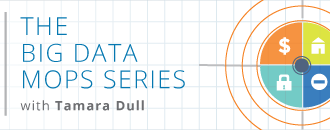Telling stories with data. It is an increasingly common business intelligence refrain–and it may well be part of your job description. If it is, why not tap into the time-tested lessons of those who tell stories with words?
Telling stories with data. It is an increasingly common business intelligence refrain–and it may well be part of your job description. If it is, why not tap into the time-tested lessons of those who tell stories with words?
Just as words are the basic unit of written stories, visualization techniques (charts, visualizations, colors, font sizes, sparklines, etc.) are the tools we have when telling data stories. No matter the form, authors will agonize about choosing the right units of expression, finding a balance between being concise and being comprehensive, simplicity and sophistication.
On questions of vocabulary and style in written communication, there seems to be agreement about the pursuit of simplicity and ensuring that the message – not the words – take center stage. Below are three common writing guidelines, and what they mean for your data communication choices.
1. Smaller, simpler words
“The finest language is mostly made up of simple unimposing words.” — George Eliot
“Don’t use words too big for the subject. Don’t say ‘infinitely’ when you mean ‘very’; otherwise you’ll have no word left when you want to talk about something really infinite.” — C.S. Lewis
My experience is that the simplest visualization techniques (bar, line, table, single number, even pie) are effective for 80% of data communication. Like simple words, you can be assured that your audience will quickly understand what you mean. Refrain from advanced visualizations like treemaps and animated bubble charts but for the special situations where the breadth and nuance of your data requires more visual sophistication.
Nevertheless, there is value in knowing what can be done in data visualization. Exposing yourself to advanced visualization techniques (start here: Infosthetic, Flowing Data, New York Times visualizations) offers similar benefits to having a large vocabulary.
2. Too many words is a symptom of poor understanding
“If you can’t explain something simply, you don’t understand it well.” — Albert Einstein
“A man who uses a great many words to express his meaning is like a bad marksman who instead of aiming a single stone at an object takes up a handful and throws at it in hopes he may hit.” — Samuel Johnson
Most people don’t really want to hear you think out loud. In data presentation, it’s tempting to think out loud by showing all the data in every conceivable way. We’ve all been a recipient of that awful 80-page PowerPoint report with seemly infinite variations on the same data.
Form an opinion. Lay it out there. Don’t wander around – or worse, allow your audience to wander too much off the path. Here’s a favorite example from the New York Times. This analytical tool knows exactly what it wants to accomplish and gets to the point immediately.
3. Words are for communication, not show
“Words in prose ought to express the intended meaning; if they attract attention to themselves, it is a fault; in the very best styles you read page after page without noticing the medium.” — Samuel Taylor Coleridge
“Any one who wishes to become a good writer should endeavour, before he allows himself to be tempted by the more showy qualities, to be direct, simple, brief, vigorous, and lucid.” — H.W. Fowler
It’s not about the data or the visualization; it’s about the message you are trying to communicate. This is not simply a question of efficient communication; it is also a question of perception. When you use unnecessarily complex visualizations, you draw attention to the wrong things. Here’s a good example of a chart that is more about the chart than the data:










